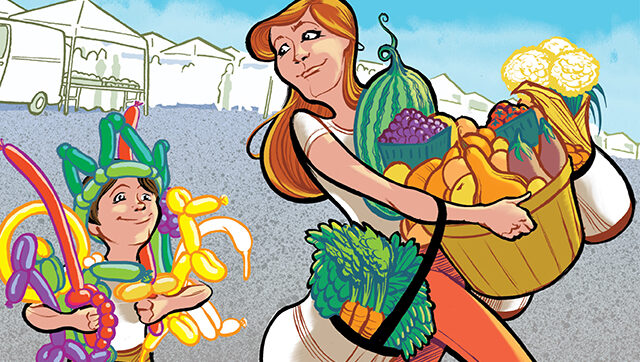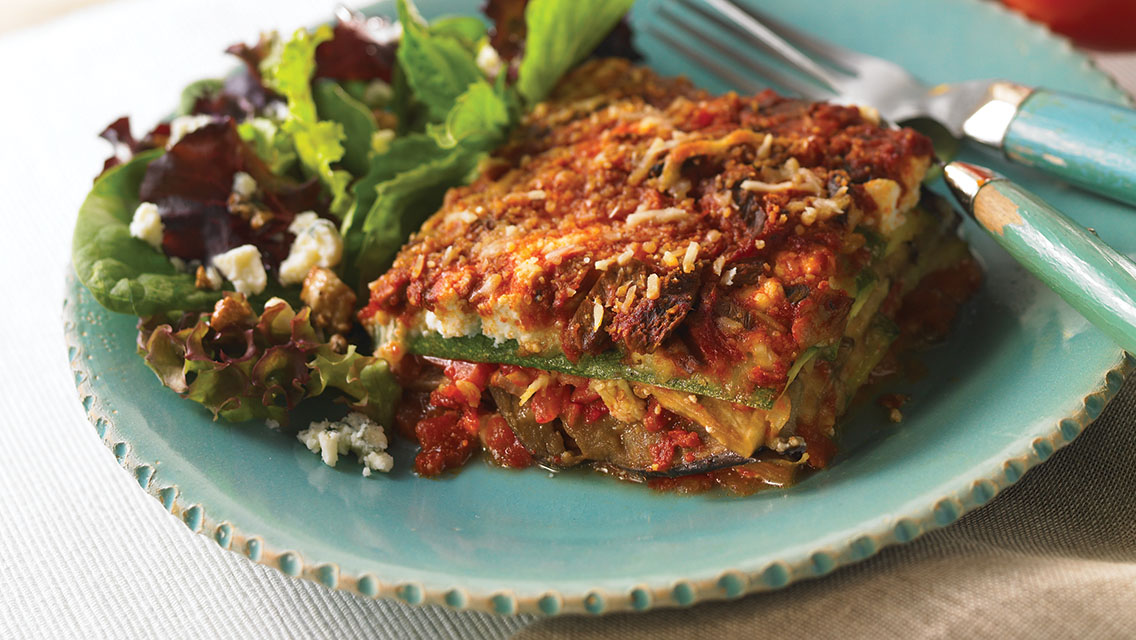Farmers’ markets have long been part of my life. After college, I went with friends on Saturday mornings to pick up fresh produce, then made salsa to eat in the backyard with cheap beer and chips. When I met the person who would eventually become my husband and the father of my kids, we bought pots of sage from the farmers’ market in the spring and, come November, cut the plants to the ground to use the last stalks to stuff the Thanksgiving turkey.
When our babies were little, we pushed them through the outdoor aisles in strollers with bags of radishes and kale hanging from the handles. As they got bigger, I handed them a few dollars and ordered them to come back with something besides cookies — any vegetable, any fruit. They returned with a lot of tiny pumpkins and some familiarity with every local variety of apple and grape.
Through all those years, I had my own ideas of what our little family was doing: We were eating fresh foods that were more nutritious than store-bought fare. We were eating a wide variety of foods that connected us to the place we lived — rhubarb and fiddlehead ferns in the spring instead of the same Mexican cherry tomatoes everyone eats year-round. We were celebrating real markers of time and seasonality — now is the time of peas, which is different from the time of pumpkins.
We were creating community. We knew the cheesemaker, the pickle guy, even the salmon fisherman — and it was nice to hear their stories of dogs cornering skunks and what the hailstorm did to the next farm over.
But now that my kids are older (10 and 8), I’ve begun wondering if all these trips to the market will affect how they’ll eat as adults.
I rejected my own mother’s advice to shop at the nearest supermarket; I never had the chance to reject my grandmother’s shopping preferences — haggling with peddlers at the produce pushcarts closest to her Lower East Side New York tenement — though I know she saw grocery stores as a wonderfully hygienic upgrade.
I recently talked to a woman who grew up on a farm without a car in the 1930s. She lived in a food world I could scarcely recognize, drinking milk straight from the cow, enjoying oranges once a year at Christmas, and welcoming summertime visits from the Rawleigh man, who brought something like orange-soda syrup with which to make a peak-summer treat known as “nectar.”
Being American means, among many other things, constantly trying to improve your life. So I was curious what my kids thought of our commitment to the farmers’ market. I asked them about it one night at dinner: What’s the best thing about the farmers’ market? What would they tell kids who had never been to one?
“I’d tell them they have balloon animals,” my 8-year-old replied before launching into a joyful recounting of balloon animals from years gone by: a blue dog, a pink cat with a purple leash, a yellow monkey.
“I’d tell someone who had never been that it’s like a grocery store times 10, with huge aisles, no walls and no ceiling, and no checkouts,” my 10-year-old elaborated. “And they have balloon animals.”
Indeed, there is an artist who brings a big bucket of balloons and a canister of gas to our local farmers’ market, and he stands on the sidewalk and makes balloon animals. All these years, though, I never realized that my kids view the balloon animals as the main event rather than a sideshow.
I quizzed them further: Who did they think those people behind the tables were?
They knew they were farmers — phew! But when they thought of farmers, did they think of those people? Oh no, never, said my little one. “When you read any little-kid book, you see pictures of people with those farm hats and jeans and everything. Ever since I was little, when I think of a farmer, that’s what I think of.”
“And farmers have to load heavy crates into trucks, and it looks hard,” said my older one. “I could never be a farmer because I’m not strong.”
You’re killing me here! I thought.
“There are honey sticks — I’d tell kids about those,” he added, referencing the straws of honey the beekeepers sell for a quarter a pop. “Or five for a dollar,” he explained.
Then they told me all about the various cookies they had tried over the years, some frosted, some with chocolate chunks.
Seriously? I thought. The farmers’ market is mainly known for its lack of walls, its overabundance of heavy crates, the balloons, and various kinds of sugar?
“Should we stop going to the farmers’ market and just eat sugar from a bowl?” I asked, interrupting a reverie about the time there was a fundraiser for a local school at the market — with snow cones.
“No, because we’d miss the tomatoes,” explained my little one. “There are lots more at the farmers’ market than regular stores. The normal ones, the yellow ones shaped like little pears, the ones you have to lift with two hands, the green ones that have stripes.” She went on to describe another half dozen: the almost-black ones the size of eggs, the late-summer giants we buy in three colors — orange, yellow, and red — to slice as thick as steak and overlap on the plate like giant fallen dominoes.
“At the farmers’ market you get to meet the people and they’re nice, and that makes it special. If a kid has never been to the farmers’ market, I’d feel bad for them. I’d want to take them.”
My little girl looked up at me. “And then they’d need you right there to ask them stuff like ‘Do you want golden raspberries?’ or ‘Don’t the strawberries look nice?’”
“I do that?” I asked.
“All the time!” they said.
“Is it annoying?”
“Yes, but it’s OK,” said my daughter. “You see more than we can.”
I know that by “seeing more,” she means I’m taller and have a better vantage point from which to survey the tables. But one of the funny things about parenting is that you see and remember things about your kids that they can’t. This one-sidedness is a particularly strange and powerful phenomenon when they’re infants, when you’re the only one laying down long-term memories. But it diminishes as they get older. Perhaps sometime in their teenage years we’ll all experience and remember the same things — or as much as people in a family ever can.
For now, I can and do see more than they can, and one of the things I see is that, when it comes to food, life is long and affected by many more things than a parent’s best intentions on weekend mornings. Like the farmers at a farmers’ market, a parent can do little more than plant seeds and wait.




This Post Has 0 Comments